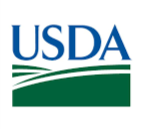August is Tree Check Month for Invasive Beetle
August is the most critical time of year to spot the Asian longhorned beetle (ALB) as adult activity peaks. That’s why the U.S. Department of Agriculture (USDA) is declaring August as “Tree Check Month” for this invasive pest. Checking trees for the beetle and the damage it causes is how residents can help USDA and its partners eliminate the beetle from the United States, and protect more trees. USDA and its partners are working to eradicate the tree-killing beetle in Massachusetts, New York, Ohio and South Carolina. However, residents in all states should keep an eye out for any new incursions.
“We’re asking for the public’s help to find Asian longhorned beetle and any tree damage it causes, because the sooner we know where the insect is, the sooner we can stop its spread,” said Josie Ryan, APHIS’ National Operations Manager for the ALB Eradication Program. “Just last year, a homeowner in South Carolina reported finding a beetle in their backyard, which led us to discover an active infestation in the state where we didn’t know the beetle was.”
The ALB is an invasive wood-boring beetle that attacks 12 types of hardwood trees in North America, such as maples, elms, buckeyes, birches, and willows. Infested trees do not recover and eventually die. Infested trees also become safety hazards since branches can drop and trees can fall over, especially during storms. In its larval stage, the insect feeds inside tree trunks and branches, creating tunnels as it feeds, then adults chew their way out in the warmer months, leaving about 3/4-inch round exit holes.
The adult beetle has distinctive markings that are easy to recognize:
- A shiny black body with white spots that is about 1” to 1 1/2” long.
- Black and white antennae that are longer than the insect’s body.
- Six legs and feet that can appear bluish in color.
Signs that a tree might be infested include:
- Round exit holes in tree trunks and branches about the size of a dime or smaller.
- Egg sites that are shallow, oval or round wounds in the bark where sap might weep.
- Sawdust-like material called frass found on the ground around the tree or on the branches.
- Branches or limbs falling from an otherwise healthy-looking tree.
HOW YOU CAN HELP:
The public has a vital role in helping to stop the spread of the ALB and eliminating it from infested areas.
Report it: If you think you found a beetle or tree damage, report it by calling the ALB hotline at 1-866-702-9938 or submitting an online report at www.AsianLonghornedBeetle.com. Try to photograph the ALB or tree damage. If you can, capture the beetle in a durable container and freeze it, which helps preserve the insect for identification. Then report it.
Reduce spread: If you live in an ALB quarantine area, please keep the tree-killing pest from spreading. Follow state and federal laws, which restrict the movement of woody material and untreated firewood that could be infested.
It is possible to eradicate the pest. USDA and its partners eradicated the insect from Illinois, Boston in Massachusetts, New Jersey and portions of New York and Ohio.
For more information about the ALB and the eradication efforts, visit: www.AsianLonghornedBeetle.com.
For local inquiries or to speak to your USDA State Plant Health Director, call 1-866-702-9938.
Contacts:
Rhonda Santos, Rhonda.J.Santos@usda.gov
Suzanne Bond, Suzanne.M.Bond@usda.gov
USDA touches the lives of all Americans each day in so many positive ways. In the Biden-Harris Administration, USDA is transforming America’s food system with a greater focus on more resilient local and regional food production, fairer markets for all producers, ensuring access to safe, healthy and nutritious food in all communities, building new markets and streams of income for farmers and producers using climate smart food and forestry practices, making historic investments in infrastructure and clean energy capabilities in rural America, and committing to equity across the Department by removing systemic barriers and building a workforce more representative of America. To learn more, visit www.usda.gov.




